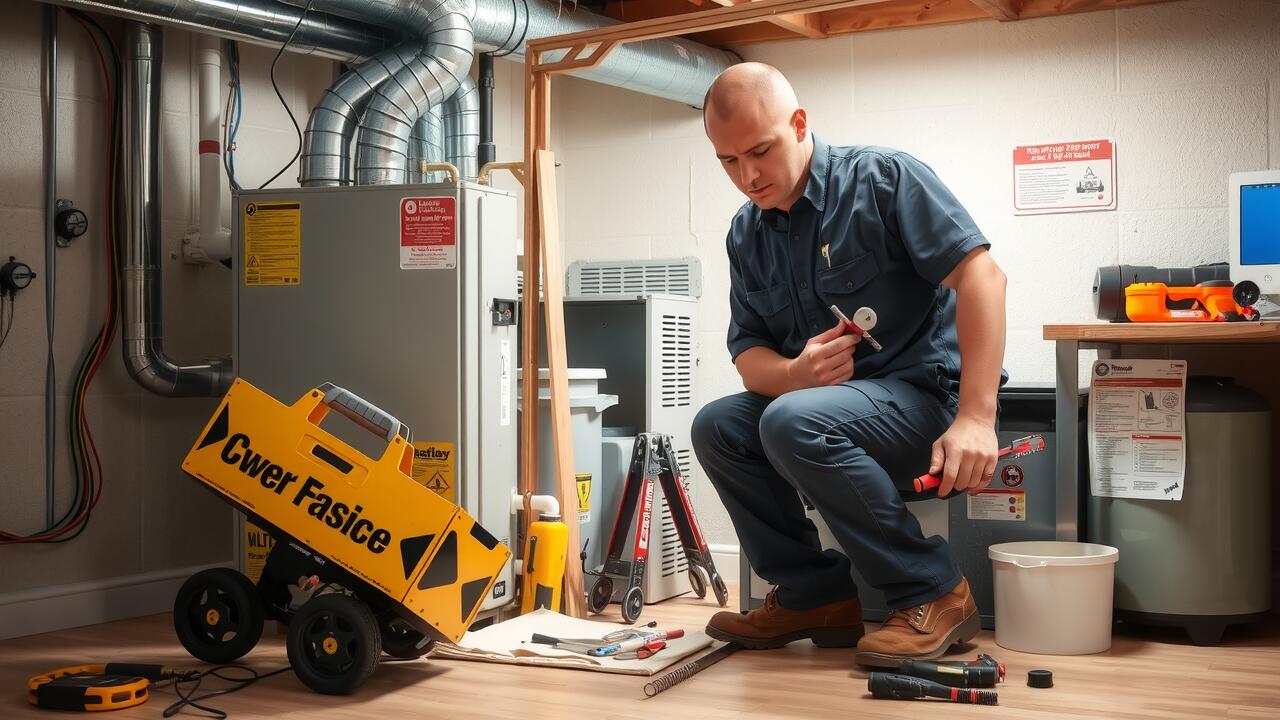
The Role of Maintenance in Cost Reduction
Regular maintenance plays a crucial role in extending the life of a furnace and mitigating unexpected repair costs. Scheduled inspections and tune-ups can identify potential issues before they escalate, reducing the likelihood of emergency repairs. By keeping components clean and well-lubricated, preventive maintenance can improve efficiency and performance. This proactive approach often results in lower energy bills, adding to overall savings.
Investing in Furnace Installation and Repair services that offer maintenance plans can further enhance cost-effectiveness. These plans typically include regular check-ups and discounts on repairs, fostering a sense of financial security for homeowners. Consistent care not only ensures optimal operation but also helps maintain warranties, safeguarding against costly breakdowns. Emphasizing maintenance may ultimately yield significant savings over time.
Preventative Measures to Consider
Regular maintenance of your furnace can significantly reduce the chances of expensive repairs in the future. Implementing simple preventative measures, such as replacing air filters and ensuring proper airflow, helps maintain efficiency and prolong the life of the unit. Scheduling routine check-ups with HVAC professionals for furnace installation and repair can identify potential issues before they escalate, allowing for timely interventions.
Homeowners should also consider upgrading their thermostat to a programmable version. This technology not only enhances comfort but optimizes energy usage, which can lead to savings on utility bills. Investing time and resources into these preventative measures can save considerable amounts in overall repair costs and create a more efficient heating system for the home.
Warranty and Insurance Impact on Costs
Homeowners often overlook the impact of warranties and insurance on the overall costs associated with furnace issues. Many modern furnaces come with manufacturer warranties that can cover specific parts for several years. This coverage can significantly reduce the out-of-pocket expenses during repairs. Additionally, some homeowners may find that a home warranty includes furnace installation and repair, providing extra financial protection for unexpected breakdowns.
Insurance policies may also play a crucial role in managing costs. If a furnace failure leads to damage in other areas of the home, homeowner’s insurance may cover the repairs. Understanding the specifics of your policy, including deductibles and coverage limits, is essential. Taking the time to review these details can save homeowners substantial amounts when faced with furnace-related issues.
Understanding Coverage Options
Coverage options for furnace installation and repair can vary significantly based on the provider and the specific plan details. Homeowners often have the opportunity to select between different warranty packages, which may include coverage for specific components or comprehensive plans that encompass labor and parts. Understanding the nuances of these coverage options is critical for managing repair costs effectively, especially during peak heating months when systems may demand more attention.
Additionally, some homeowners may choose to add coverage for furnace installation and repair through a homeowners insurance policy. This can be beneficial in case of unexpected breakdowns or damage that isn’t covered under a standard warranty. Carefully reviewing the terms of any insurance policy is essential, as this can help ensure that essential repairs will be manageable, potentially saving significant expenses in the long run.
Comparing Repair vs. Replacement Costs
When faced with a malfunctioning furnace, homeowners often grapple with the decision to repair or replace the unit. Repair costs can vary significantly based on the nature of the issue and the age of the furnace. Older systems may require more frequent repairs, raising concerns about their reliability and efficiency. In contrast, if repairs exceed a certain percentage of the total replacement cost, it may be more financially sound to invest in a new furnace.
On the other hand, Furnace Installation and Repair presents an opportunity to evaluate long-term financial implications. A new furnace often comes with enhanced energy efficiency, which can lead to lower utility bills over time. Additionally, new models typically include updated warranties, providing peace of mind for homeowners. Ultimately, the choice between repair and replacement hinges on the specific circumstances of the existing system and the homeowner's budget resilience.
When to Opt for a New Furnace
Deciding when to replace an old furnace can be challenging. Homeowners should consider both the age of the unit and its current operational efficiency. If a furnace is over 15 years old and frequently requires repairs, it may be more cost-effective to invest in a new system. Increased energy bills can be a sign that the furnace is no longer functioning efficiently, pointing towards the need for a replacement.
Another key factor is the extent of repairs needed. Minor fixes may be manageable, but significant issues or repeated problems can indicate that a new furnace would be a wiser investment. Evaluating repair costs against the price of Furnace Installation and Repair can provide a clearer picture. Understanding long-term energy savings from a new unit can also influence the decision to replace rather than repair an aging furnace.
FAQS
What is the average cost of fixing a furnace?
The average cost of fixing a furnace typically ranges from $100 to $1,000, depending on the issue and the type of furnace. Simple repairs may cost less, while more complex problems can be significantly higher.
How can regular maintenance help reduce furnace repair costs?
Regular maintenance can help identify potential issues before they become major problems, ensuring your furnace operates efficiently and reducing the likelihood of costly repairs.
Are there preventative measures I can take to avoid furnace repairs?
Yes, some preventative measures include changing air filters regularly, scheduling annual professional inspections, and ensuring that vents are clear of obstructions.
Does my furnace warranty cover repair costs?
Many furnace warranties cover repairs for specific parts but may not include labor costs. It's essential to review your warranty details to understand what is covered.
When should I consider replacing my furnace instead of repairing it?
If your furnace is over 15 years old, requires frequent repairs, or the repair costs are more than 50% of the replacement cost, it may be more cost-effective to opt for a new furnace.
